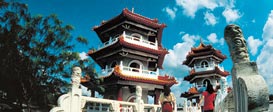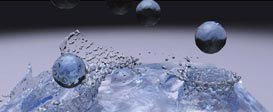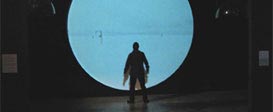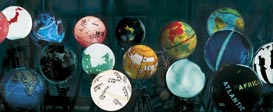Developing Augmented Reality Applications
![]() Full Conference
Full Conference ![]() One-Day Full Conference
One-Day Full Conference
Saturday, 13 December, 08:30 - 12:15
Room 313, 314
Level: Beginner
In this course, attendees learn how to use open source software to build their own augmented reality (AR) applications.
As computers become more and more invisible, AR (overlaying virtual images on the real world) is becoming an increasingly important application area for computer graphics and user-interface design. This detailed introduction to AR interface design and research includes reviews of important topics such as tracking and registration, interaction techniques, design principles, and usability evaluation, as well as key areas for current and future AR research. Case studies are presented in the application areas of gaming, entertainment, medicine, and engineering. Part of the course also involves hands-on demonstrations where attendees will be able to experience the technology for themselves.
Significant portions of the course are devoted to reviewing the ARToolKit and osgART open-source software tools that can be used to start building AR applications, as well as other supporting software tools. After this course, attenddes will understand the fundamentals of AR interface design, the tools they can use to build AR applications, and how to evaluate them once they are built.
Prerequisites
Some programming experience is useful but not necessary. Also useful but not required: some experience with C/C++ programming and the OpenGL API.
Intended Audience
Academic and industrial researchers, and anyone interested in developing AR applications.
Instructors
Mark Billinghurst
Human Interface Technology Laboratory New Zealand
Raphaël Grasset
Human Interface Technology Laboratory New Zealand
Instructor Bios
Mark Billinghurst
Mark Billinghurst, director of the Human Interface Technology Laboratory New Zealand, develops innovative computer interfaces that explore how virtual and real worlds can be merged. He has produced over 80 technical publications and presented demonstrations and courses at a wide variety of conferences. He has a PhD from the University of Washington and conducts research in augmented and virtual reality, wearable computing, and conversational interfaces. He has previously worked at ATR Research Labs, British Telecom, and the MIT Media Laboratory. One of his research projects, the MagicBook, was winner of the 2001 Discover Award for best entertainment application.
Raphaël Grasset
Raphaël Grasset is a research engineer at the Human Interface Technology Laboratory New Zealand. He joined the lab in June 2004 after his PhD in Computer Science at ARTIS (ex-iMAGIS Lab) at Université Joseph Fourier - Grenoble. During his PhD studies, he worked on collaborative augmented reality in tabletop meeting situations. His research interests include: 3D interaction, augmented reality, mixed reality, virtual reality, computer-human interaction, user evaluation, CSCW, TUI, computer graphics, and computer vision.









